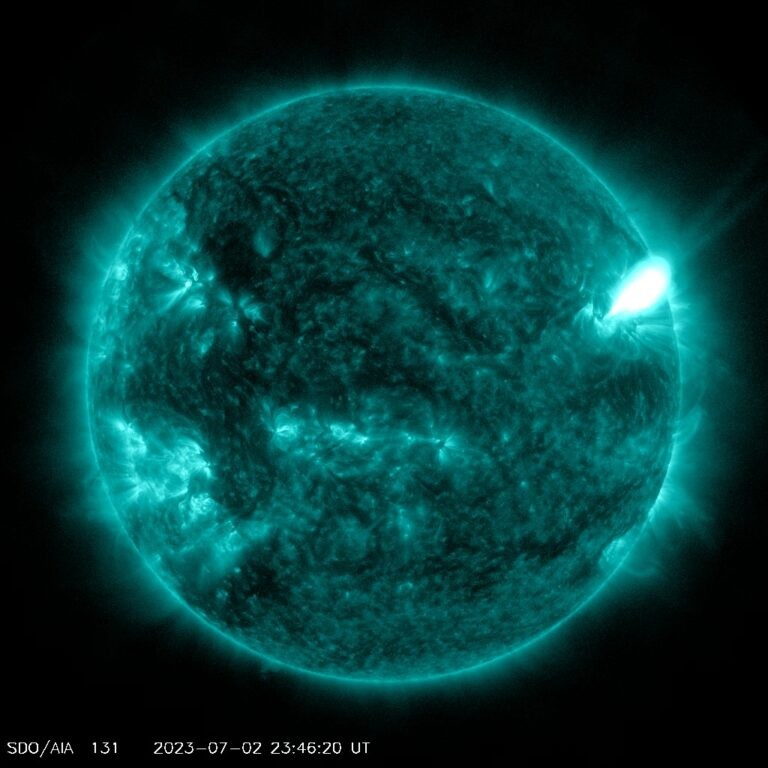The sun unleashed a powerful solar flare, reaching its peak at 7:14 p.m. ET on July 2. The event was captured by NASA's Solar Dynamics Observatory, a satellite that diligently monitors the Sun's activity.
Solar flares are powerful eruptions of energy that occur on the sun's surface. They are characterized by sudden releases of electromagnetic radiation, including intense bursts of X-rays and ultraviolet (UV) light. These eruptions are caused by the rapid and dramatic changes in the sun's magnetic field.

NASA Captures Intense Solar Flare
According to NASA, an active sunspot region called AR 3354 unleashed this X-class solar flare. Solar flares typically occur in active regions of the sun where magnetic fields are strong, such as sunspots.
The energy behind a solar flare is stored in the sun's magnetic field and is released in a sudden and explosive manner. The exact mechanisms triggering solar flares are still not completely understood, but they are believed to be associated with the complex interactions between magnetic fields and plasma (ionized gas) on the sun's surface.
The energy released during a solar flare is immense, equivalent to millions of hydrogen bombs exploding simultaneously. This energy is emitted across a broad range of wavelengths, from X-rays and UV radiation to visible light and even radio waves. Solar flares can have varying durations, ranging from minutes to several hours.
X1.0 Flare
The recent solar flare has been classified as an X1.0 flare, indicating its exceptional intensity. The classification system utilizes the letter "X" to denote the most powerful flares, with the accompanying number providing additional information regarding the flare's strength.
The effects of solar flares can be far-reaching. They can disrupt radio communications on Earth, leading to temporary blackouts or disturbances.
Intense X-ray and UV radiation from solar flares can also interfere with satellite communications and navigation systems. In addition, solar flares can also cause geomagnetic storms when the charged particles ejected during the outburst reach Earth's magnetosphere.
These storms can affect power grids, induce electrical currents in pipelines, and generate beautiful auroras (Northern and Southern Lights) in the polar regions. According to reports, the recent flare caused a brief, intense radio blackout in the western United States and the Pacific Ocean.
Scientists closely monitor solar flares using various space-based observatories, such as NASA's Solar Dynamics Observatory and the Solar and Heliospheric Observatory (SOHO). These observatories provide valuable data and insights into the behavior and impact of solar flares.
Understanding solar flares and their potential effects is crucial for space weather forecasting and mitigating any adverse consequences they may have on Earth and our technological systems.
Related Article : A Sunspot With the Size of Four Earths Ejects 10 Million Degree Solar Flare, Causes Radio Blackout over the Pacific

ⓒ 2025 TECHTIMES.com All rights reserved. Do not reproduce without permission.




